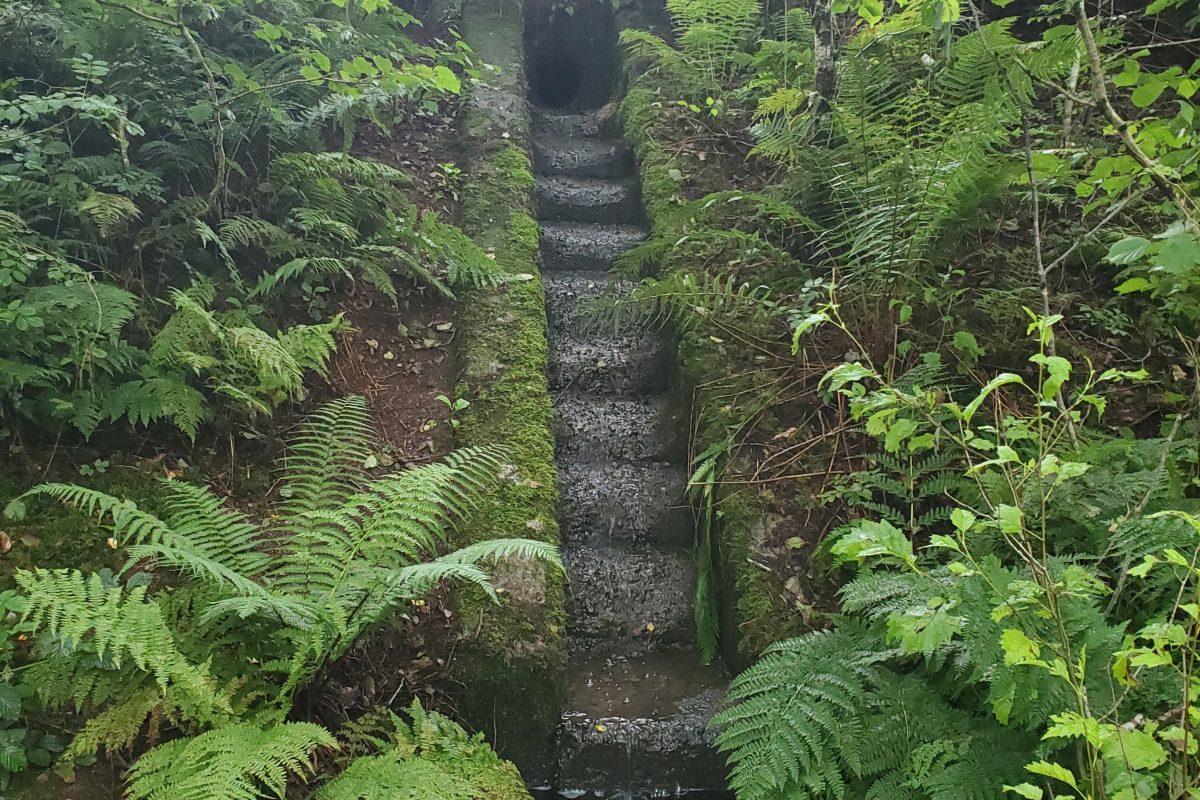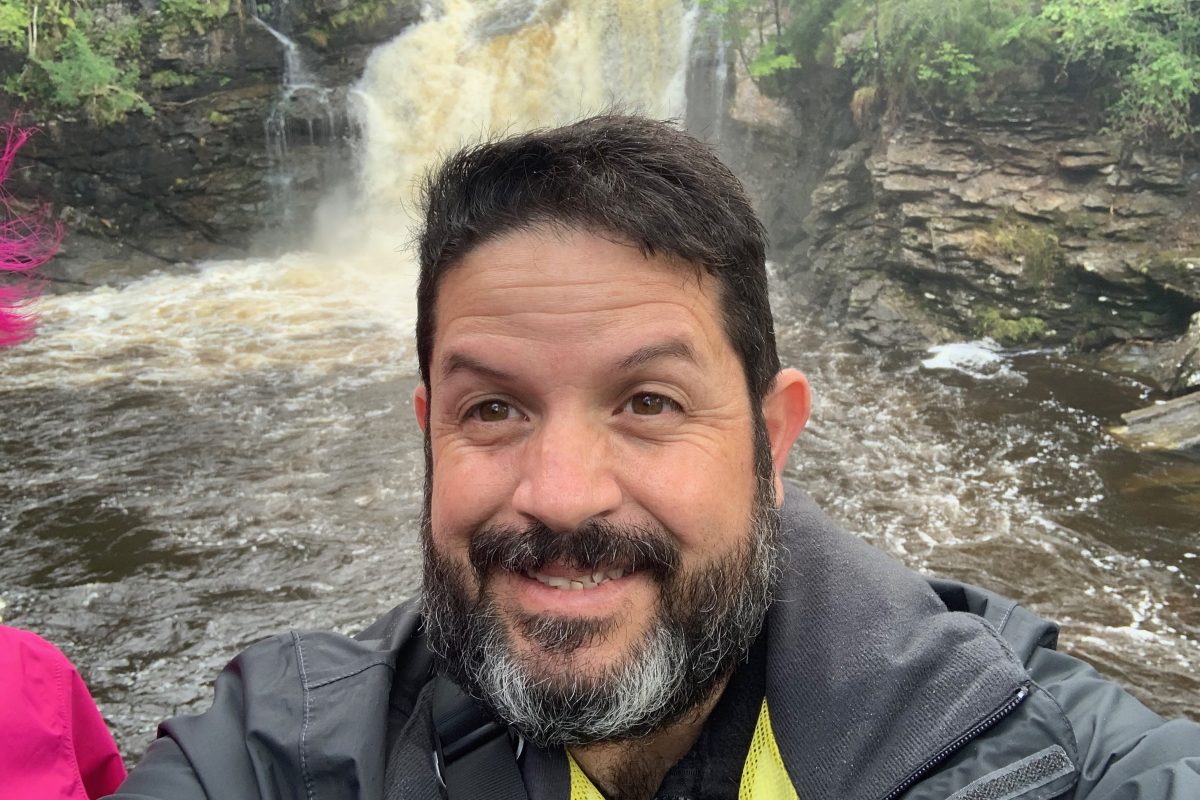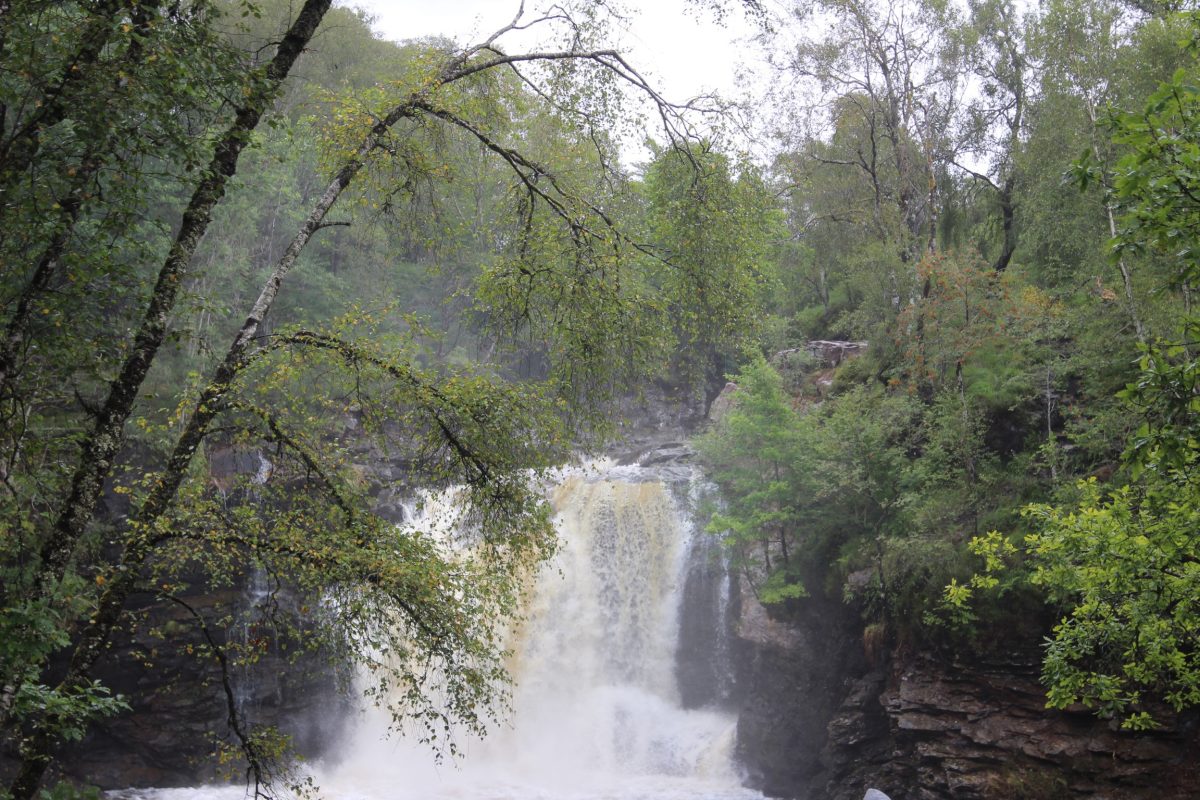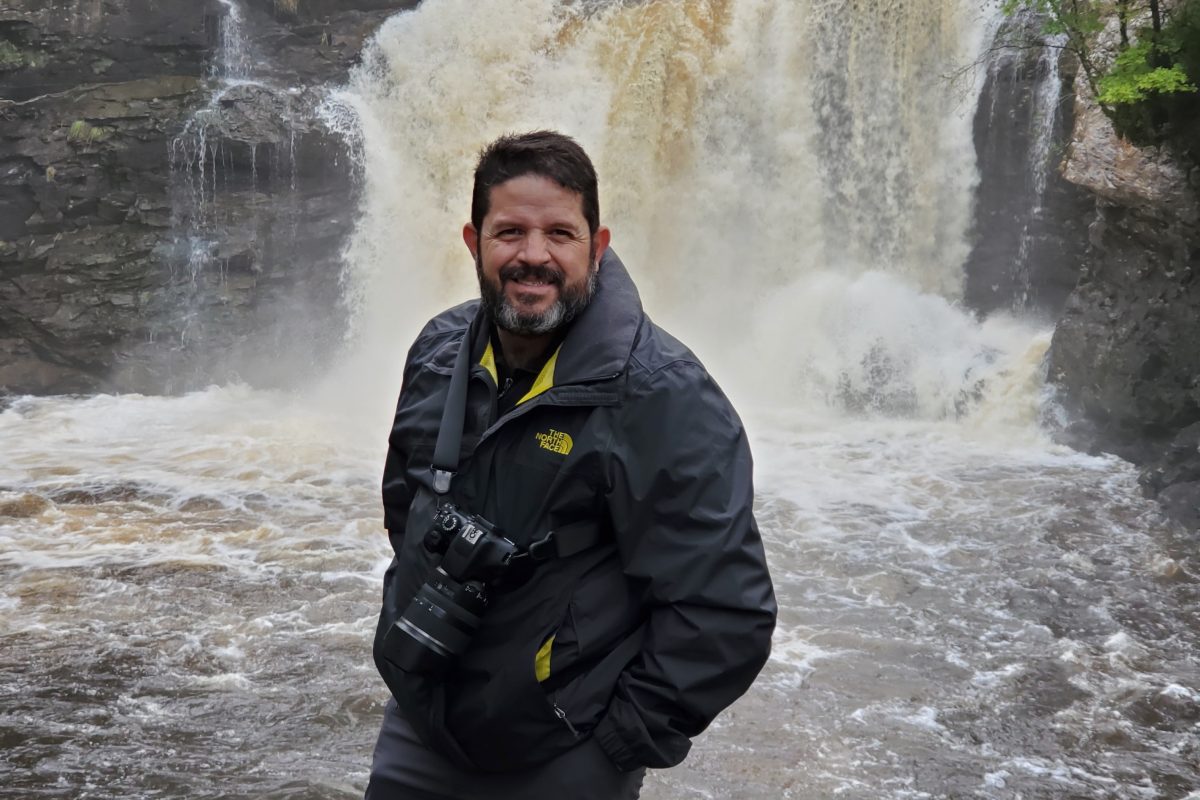The day began with a sense of history and contrast. Leaving the quiet glen of Glen Fruin, where the ghosts of clan battles linger among the rolling hills, I paused to take in the solemn beauty of the landscape. The glen stretched wide and green, its slopes softened by autumn hues of gold and russet. Heather clung to the earth like a purple mist, and the air carried the faint tang of peat and rain. It was hard to imagine that this tranquil valley had once echoed with the clash of steel and the cries of men during the infamous feud between the MacGregors and the Colquhouns in 1603.
From Glen Fruin, the road curved toward Faslane Naval Base, a stark reminder of modern power set against the timeless backdrop of Loch Long. The steel-gray waters mirrored the hulking silhouettes of submarines, their presence silent yet commanding. It was a strange juxtaposition—ancient hills and cutting-edge technology sharing the same horizon. After a brief stop to take in the view, I turned away from the naval base and toward something wilder, older, and untouched: the Falls of Folloch.
The Path to Folloch
The trailhead lay at the edge of a dense pine forest, where the scent of resin mingled with the cool breath of the Highlands. The path began gently, a ribbon of earth winding through towering Scots pines whose trunks rose like pillars in a green cathedral. Shafts of sunlight pierced the canopy, dappling the forest floor with gold.
As I walked deeper, the sound of the modern world faded, replaced by the rustle of leaves and the distant murmur of water. Moss carpeted the stones, and ferns unfurled their delicate fronds along the edges of the path. Red squirrels darted among the branches, their russet coats flashing like embers against the dark bark. Overhead, a pair of buzzards wheeled lazily, their cries echoing across the glen.
The trail grew steeper, climbing through a landscape that shifted from pine to birch and oak. Here, the air felt cooler, tinged with the earthy scent of damp soil and fallen leaves. Streams crossed the path in silver threads, their banks lined with wildflowers—late-blooming harebells and the last stubborn blooms of heather clinging to the season’s edge.
The Falls Revealed
After an half hour of steady ascent, the sound of rushing water grew louder, a deep, rhythmic roar that seemed to pulse through the trees. The path curved sharply, and then the forest opened like a curtain drawn aside.
There it was—the Falls of Folloch, tumbling in a white cascade from a cleft in the dark rock. The water plunged into a deep pool, its surface swirling with foam before spilling onward in a lively stream. Mist rose from the base of the falls, catching the sunlight in a shimmering veil. The air was alive with motion and sound, a symphony of water and wind.
I stood at the edge of the pool, boots sinking into moss, and let the scene wash over me. The cliffs were draped in ivy and lichens, their surfaces glistening with spray. Tiny rainbows flickered in the mist, vanishing and reappearing like fleeting dreams.
Around me, life thrived in this hidden sanctuary. A dipper bobbed on a rock near the torrent, its dark plumage blending with the stone as it darted into the water for insects. Dragonflies skimmed the surface of the pool, their wings catching the light in iridescent flashes. The air hummed with the quiet persistence of nature, a reminder that beauty often hides in the folds of the wild.
Reflections on the Journey
The hike to the Falls of Folloch was more than a walk through the Highlands—it was a passage through time and contrast. From the storied slopes of Glen Fruin to the steel presence of Faslane, and finally to this untouched glen where water speaks in eternal tongues, the journey felt like a dialogue between past, present, and the enduring spirit of Scotland’s land.
As I turned to leave, the roar of the falls lingered in my ears, a heartbeat of the hills. The path back wound through the same forest, but now every pine, every fern, every ripple of water seemed charged with meaning. In the Highlands, beauty is never static—it moves, it breathes, it endures.
















